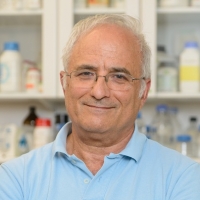Established in 2012 by the Weizmann Institute of Science, the Nancy and Stephen Grand Israel National Center for Personalized Medicine aims to create scalable, robust, cutting-edge infrastructure capable of supporting national activities in its fields of expertise; to provide services and collaboration opportunities with a focus on high-value projects; to instill a spirit of innovation, enabling the creation of novel research tools and methods, and developing best practices; and to Disseminate new research technologies and share relevant knowledge with the Israeli biomedical community.
The center's activity is based on the collaborations between its units: the Crown Institute for Genomics, headen by Dr. Danny Ben-Avraham, the de Botton Institute for Protein Profiling, headed by Dr. Yishai Levin, the Maurice and Vivienne Wohl Institute for Drug Discovery, headed by Dr. Haim Barr, the Ilana and Pascal Mantoux Institute for Bioinformatics, headed by Dr. Danny Ben-Avraham, the David and Fela Shapell Family Institute for Preclinical Studies, headed by Prof. Michal Neeman, and the Medicinal Chemistry unit, headed by Dr. Chakrapani Subramanyam.
Our Address:
The Nancy and Stephen Grand Israel National Center for Personalized Medicine
(at the Solar Tower building)
Weizmann Institute of Science
P.O.B. 26 Rehovot, Israel


